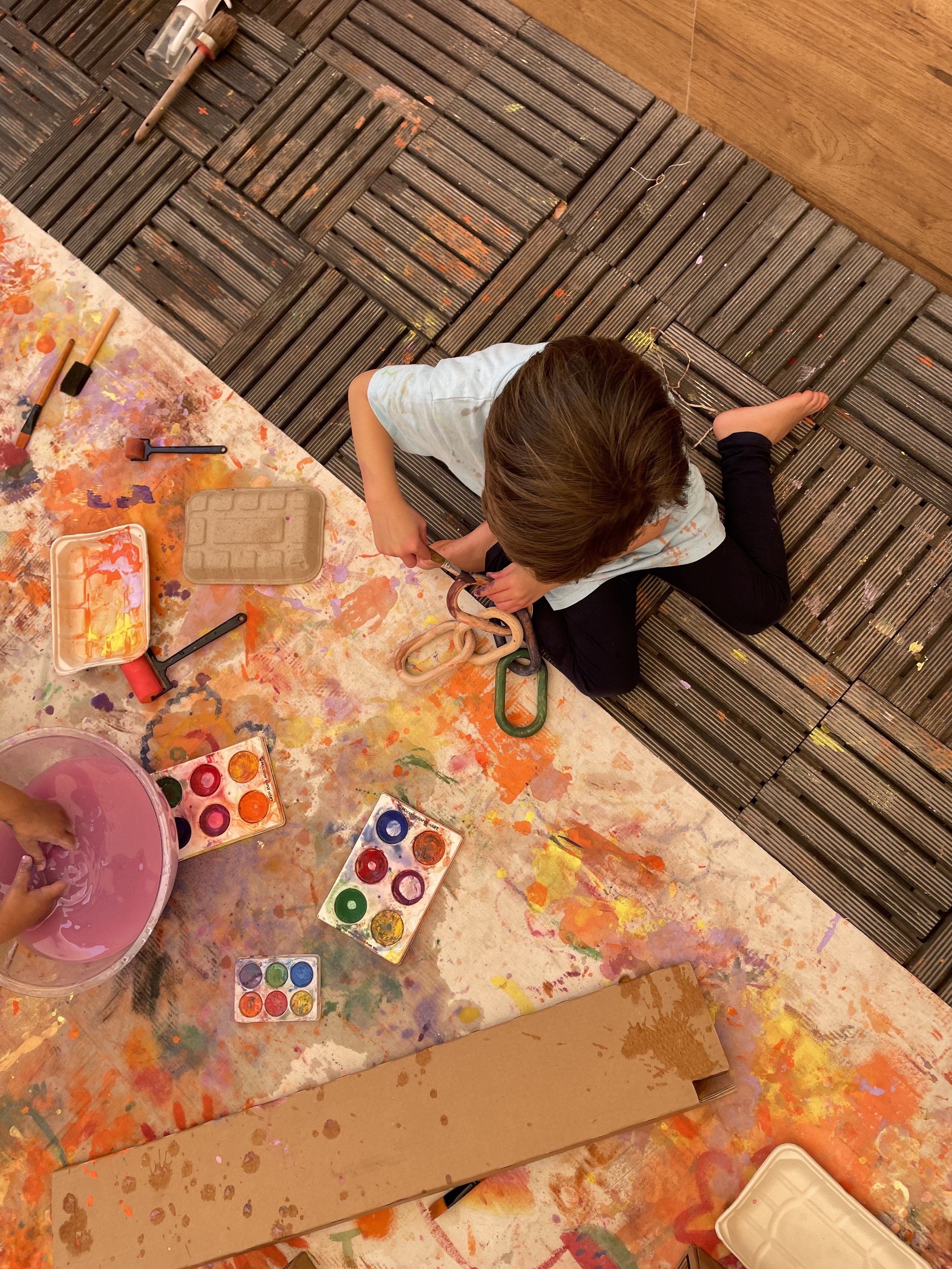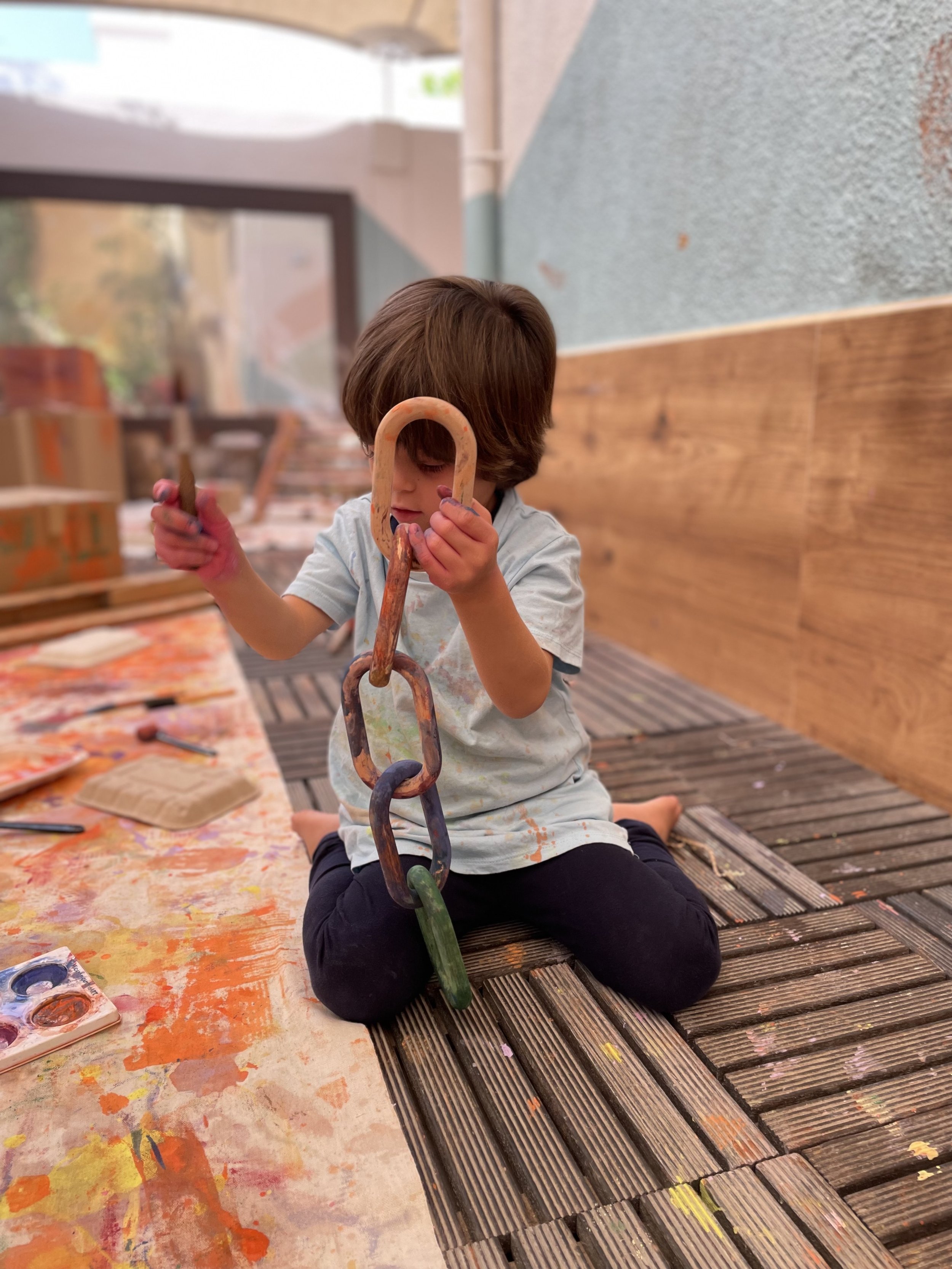The "W" Sitting Position: What It Means and Why It Matters
The "W" Sitting Position: What It Means and Why It Matters
Lying. Rolling. Sitting-up. Crawling. These aren’t just adorable baby milestones, they’re critical steps in your child’s motor development journey. Think of them as Mother Nature’s way of prepping little humans for upright life. Each stage lays the groundwork for the next, building the coordination, strength, and muscle tone necessary for the grand finale: walking (and then running, climbing, dancing on the sofa, and generally keeping you on your toes).
But what happens when your little one skips a step or hangs onto a habit that might not be doing them any favors? Enter the mysterious (and surprisingly common) “W sitting position.”
What is the "W" Sitting Position?
The "W" sitting position happens when a child plops down on their bottom, knees bent and legs splayed out to either side, forming the shape of, you guessed it, a “W.”
Picture a child with their bum on the floor, knees forward, and feet flung out beside their hips. Cute? Maybe. Harmless? Not always.
This position gives children a wide base of support, making them feel more stable when they’re playing, building towers, or launching imaginary tea parties. It keeps them centered and balanced, which sounds great, except this stability comes at a cost.
Why Do Kids Sit in the "W" Position?
It’s actually very common and even natural for toddlers and preschoolers to choose the W sitting position. Here’s why:
Greater stability: It’s easier for kids with developing muscles and balance to stay upright in this position.
Less trunk control required: They don’t have to engage their core as much.
Comfort: For some children, especially those with joint hypermobility or low muscle tone, this position just feels more comfortable.
However, the long-term effects of habitual W sitting can create developmental challenges.
The Hidden Risks of the W Sitting Position
So what’s the problem with a little W-shaped lounging? A lot, actually. Here’s the scoop:
1. Trunk Rotation and Balance Issues
When children sit in the W position, they don’t develop proper trunk rotation (twisting their torso), which is essential for:
Reaching across the body
Crossing the midline
Maintaining balance during physical activities
Fun fact: Without proper midline crossing, your child may struggle later with skills like handwriting, reading, and tying shoelaces.
2. Muscle Development and Walking Patterns
The W position can cause the muscles in the hips and legs to shorten and tighten, which may lead to:
Pigeon-toed walking
Toe-walking
Difficulty with gross motor activities like running or skipping
3. Clue to Underlying Issues
A strong preference for W sitting can be a sign of:
Joint hypermobility
Sensory processing disorder
Unintegrated reflexes (like the STNR or Tonic Labyrinthine Reflex)
These reflexes are supposed to disappear after infancy. When they stick around, they can lead to:
Poor posture
Difficulty concentrating
Poor coordination
Reading and writing challenges
Understanding STNR and the Tonic Labyrinthine Reflex
Let’s dive deeper into the two primitive reflexes most often linked to W sitting position: the Symmetrical Tonic Neck Reflex (STNR) and the Tonic Labyrinthine Reflex (TLR).
What is the Symmetrical Tonic Neck Reflex (STNR)?
The STNR is a transitional reflex that helps babies move from lying on their tummy to crawling on all fours. It typically appears around 6–9 months and should integrate by 11 months.
When STNR is active, you’ll see:
When the child looks up, their arms straighten and legs bend.
When they look down, their arms bend and legs straighten.
This reflex encourages the creeping (crawling) motion, which is vital for bilateral coordination and visual tracking.
Unintegrated STNR may lead to:
Poor posture when sitting
W sitting as a compensation for weak core strength
Difficulty with tasks like copying from the board or reading while seated
Problems with coordination during sports or playground play
What is the Tonic Labyrinthine Reflex (TLR)?
The TLR is one of the earliest reflexes, present from birth, and is linked to a baby’s head movements and overall muscle tone.
When TLR is active:
Tilting the head back causes the body to stiffen and straighten.
Tilting the head forward causes the limbs to curl inward.
Unintegrated TLR may cause:
Poor balance
Challenges with proprioception (knowing where your body is in space)
Overcompensation with stabilizing postures like W sitting
Difficulty with tasks requiring head movement and coordination
How Kinesiology Helps with Reflex Integration
Here’s where it gets exciting, Kinesiology is a holistic therapy that can play a powerful role in supporting children with unintegrated reflexes.
At Kinesiology Dubai, practitioners use muscle testing to detect imbalances in the body. They then use gentle physical techniques, movement patterns, and energetic balancing to help integrate primitive reflexes like STNR and TLR.
Benefits of Kinesiology for W Sitters:
Identifies which reflexes remain unintegrated
Uses body-based movements to support reflex maturity
Enhances core strength, balance, and posture
Supports coordination and concentration
Complements occupational therapy and educational interventions
Good news: This approach is non-invasive, child-friendly, and often enjoyable for little ones!
If your child shows signs of habitual W sitting position or struggles with posture and coordination, consider booking a session at Kinesiology Dubai. Their team is experienced in working with children and can tailor strategies to suit individual needs.
Spotting W Sitting in Your Classroom or Home
At our British nursery in Dubai, we make it a point to observe how children move, sit, and play. Spotting physical red flags early gives us the opportunity to work together with parents and specialists to make real developmental progress.
Signs to look out for:
A child always sits in a W shape without transitioning to other positions
They struggle with balance when sitting cross-legged
You notice toe-walking or pigeon-toed feet
Alternative Sitting Positions to Encourage
Here’s where your toolkit of fun (and healthy) sitting options comes in. If you notice a child sitting in a W position, gently redirect them into one of the following:
Criss-cross applesauce (cross-legged)
Long sitting (legs straight out in front)
Side sitting (legs bent to one side)
Tummy time or prone on elbows (great for building shoulder and core strength)
Make it playful, have a "silly sitting day" or a "zebra pose challenge." Let imagination lead the way!
What Should Nurseries in Dubai Be Doing?
If you’re looking at nurseries in Dubai, go beyond the glossy brochures and colorful classrooms. Ask yourself:
Do the teachers observe children’s posture and motor development?
Are staff trained to spot early signs of physical delays?
Does the school collaborate with occupational therapists or developmental specialists?
At a top-tier British nursery in Dubai like Kid’s Island Nursery, our educators are trained to observe not just behavior and language, but also physical milestones and movement patterns. We believe that early intervention is everything.
We also work closely with partners like Kinesiology Dubai to support holistic development for every child.
Home and School: A Dynamic Duo
You know what they say: it takes a village (and possibly a good cup of coffee). When teachers and parents work hand-in-hand, developmental challenges don’t stand a chance.
Share observations regularly
Keep a consistent message about healthy sitting
Celebrate progress ("Look! You’re sitting like a yoga master today!")
Bonus: Movement Break Ideas for Preschoolers
Animal walks (bear, crab, frog)
Balance beam games
Obstacle courses with crawling, jumping, and turning
Yoga for kids
Balloon volleyball or beanbag toss
These are not just fun, they help build the core strength, balance, and coordination needed for healthy motor development.
Infographic: Effects of W Sitting and Better Alternatives
Caption: W sitting can hinder trunk rotation and balance. Try cross-legged or side sitting instead. | W sitting position, nurseries in Dubai
FAQs About the W Sitting Position (and Everything You Were Too Polite to Ask)
Is W sitting ever okay?
Occasionally, yes. It becomes a concern when it’s the child’s go-to position.
Does W sitting mean my child has a developmental issue?
Not necessarily. But it’s worth monitoring, especially if accompanied by other motor concerns.
Can I just tell my child to stop sitting like that?
You can redirect, but it’s best to do so gently and consistently. Show them other fun ways to sit.
What if my child resists sitting differently?
Make it a game. Use stories, songs, or animal poses.
Are there exercises to help children stop W sitting?
Yes! Core-strengthening, balance exercises, and yoga can help.
How do nurseries in Dubai address this?
Quality nurseries have trained staff who can spot and support children’s motor development.
Can W sitting cause pain?
Over time, yes, it can strain hips, knees, and ankles.
Should I be worried about unintegrated reflexes?
If your child shows multiple signs (poor balance, clumsiness, etc.), talk to a specialist.
What professionals should I consult?
An occupational therapist, pediatric physiotherapist, or kinesiologist can help.
Where can I learn more?
Visit Kinesiology Dubai or consult your nursery’s educational coordinator.
Final Thoughts: Let’s Sit on This (But Not in a W!)
Children are naturally curious and quirky, and sometimes their bodies reflect that in interesting ways. While the W sitting position might seem harmless at first glance, staying aware and proactive is key.
At our British nursery in Dubai, we take these little posture quirks seriously, not to panic, but to empower. Together with families, we aim to create a nurturing space where every child can move, grow, and thrive.
Understanding reflexes like STNR and TLR, and working with tools like Kinesiology, can make a world of difference.
So here’s to raising strong, confident, and well-balanced little humans, one seated stretch at a time.
Looking for more expert tips and playful insights? Check out our upcoming blog series on physical development milestones and how top nurseries in Dubai are making a difference.
Got a question or story to share? Drop us a message, we’d love to hear from you!



